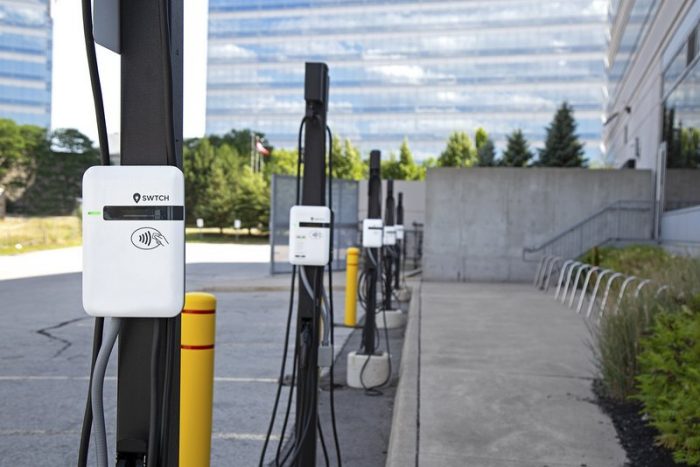
The EV charging tech space for commercial and industrial applications is getting interesting (check out a ton of options here). And the innovation is needed. Most multifamily housing or office buildings are over 40 years old and not designed to provide the electrical capacity for a dozen or more full speed level 2 charging stations in their parking garages. Then consider the financials of putting in, say, 20 full speed level 2 chargers at 7 kW. That’s 140 kW — possibly one-third of the building’s profile.
But how long are these vehicles typically parked, and how much charge time do they actually need?
“In those locations, we see over 10 hours of parked vehicle time but under 3 hours of charging time,” says Carter Li, CEO of SWTCH Energy. SWTCH was founded in 2016 as Li was trying to solve his own specific challenge of living in a downtown apartment and trying to get EV charging in place. This is where his company finds the niche for EV charging-as-a-service especially compelling. “That’s a lot of time to play with essentially. If the end goal is everyone gets a full charge by the time they wake up, there’s a lot you can do to optimize with the existing infrastructure in place without having to spend massive amounts of money to achieve that objective.”
Instead of that 140 kW, a property may only need 40 or 50 kW of demand to cover those same 20 spots and avoid the need for new service from the utility. A charging bank of under 50 kW could be up and running in 2 to 4 weeks as long as no panel upgrades are needed.
“If you’re asking for 200 kW off the bat, that will take forever from an interconnect standpoint,” Li says. “But if you’re asking for 30 or 40 kW, chances are they have that in the building already and it’s just a reallocation of energy.”
A neighborhood in which every single-family home is adding an EV will be a different story because the nearby transformer might be spec’d to 75 kVA, versus a multifamily or office building in a higher density environment that uses a large commercial transformer. That’s why Li finds the building itself to be the concern and not the infrastructure beyond it.
Connecting this to our look at the low-income incentives in the Inflation Reduction Act, Li also sees this model as the simplest way to add EV charging in low- to- moderate income (LMI) multifamily housing.
“The property management company doesn’t have to pay anything for us to install,” Li says. “We own and operate the charging stations. Think of it like a coin-operated laundromat. People pay a monthly fee to gain access to charging. The apartment renter won’t buy something for a property they don’t own or don’t have space for, but paying $20 a month for the access, plus the electricity of the charge, and it still comes out cheaper than paying for gas.”
The property management company can now check that box as having EV charging as an amenity without having the upfront installation and long-term O&M costs.
“We’re not asking the developer to take the risk, that’s on us,” Li says. “And because we understand the model and the growth potential, we can model it out correctly to put it in these locations that otherwise wouldn’t get financed.”
The smart charging goes beyond facilitating a full charge for a bunch of cars at a coordinated pace. SWTCH currently has 4 pilots now with large real estate developers putting in solar and thinks they will avoid a need for a mass amount of energy storage because they can leverage the existing buildings’ fleets of vehicles as energy storage devices.
Chris Crowell is the Editor-in-Chief of Solar Builder.
— Solar Builder magazine
[source: https://solarbuildermag.com/news/at-your-service-how-swtch-eases-urban-ev-charging/]

Leave a Reply
You must be logged in to post a comment.